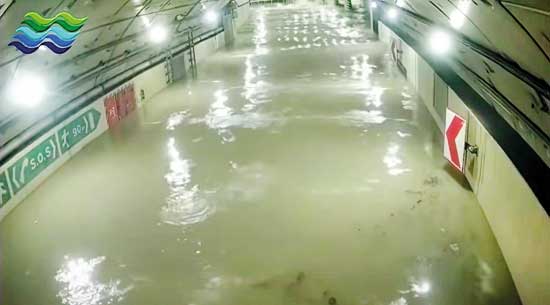Solutions to flood management in Sri Lanka
As President of the Chamber of Construction Industry, between 2001 and 2017, I published several letters connected to the flooding two to three times a year. These floods have been causing huge damage to the built-up area including the environment, physical infrastructure, displacement of people and loss of life and damage to equipment. The loss can be estimated in billions of rupees. The cause of this unprecedented flooding could be attributed to the filling of the land by cutting the hillsides on either side of the Expressways specially the Motorway – 1 preventing free circulation of water to either side of the Expressway. The earth filling has continued in other Expressways as well. The RDA considers this solution to be more viable as against the other options.
On the other hand, if the Expressways were elevated, the construction would have been faster and the flood water would have easy access to flow either way as in the past and people and animals would have also been able to interact conveniently with their families and friends on either side of the Expressway. Regarding the cost of Expressways with today’s technology, elevated Expressways are more viable and internationally popular than the archaic system followed in Sri Lanka.

Smart tunnel overseas that transfers rain water to reservoirs.
Another phenomenal factor experienced by Sri Lanka is while the South has rain and flooding, once or twice a year at least 75 per cent of the flood water is directed to flow into the sea or being pumped to the sea. At the same time, in the North and East there is a troubled drought without water for the people. Therefore, the ideal scenario is to have a mechanism of directing the excess flood water from the South to the North and East and vice- versa. If this concept is accepted, the Irrigation and the Survey Departments could identify ideal traces to direct the excess flood water through underground Hume pipes or similar in appropriate directions. These solutions will need the latest technology to transfer the water. In the long term, Sri Lanka would be the beneficiary as clean water will be available for better health and agriculture for the people in all parts of the country. Many countries in Asia including Japan, Korea, Malaysia, Thailand and Singapore have flood water transfer or retention mechanisms. In Europe, some of the developed countries like Germany, France, Spain and Italy are already finding alternative methods for transferring water resources. The climate change has aggravated the situation.
Alternatively, senior retired irrigation engineers are aware that during the British times, there was a proposal to dam the Kelani River and the water diverted to reservoirs both upstream and downstream at Kithulgala or thereabouts. This solution will prevent large volumes of flood water reaching Colombo district to flood the area and subsequently to be pumped to the sea. Similar solutions could be adapted for Kalu Ganga during the flooding. I am aware that detailed proposals were prepared by late Prof. Arumugam, late Eng. D.L.O. Mendis and others who have advocated this vision but unfortunately, no action was taken to implement this concept. The present irrigation engineers should have a commitment to embark on this challenge. The non-availability of financial resources may be a constraint but if the positives are greater, the government may be able to source a line of credit to implement this project. If so, water will be available for drinking, agricultural purposes, exports and for all Sri Lankans to lead a healthy life including the animals.
In the Western Province where the floods are uncontrollable, large pumping stations are constructed at present to pump the flood water to the sea. If similar investments are made to pump the water to tanks at higher elevations or construct underground storage tanks as in several Asian countries at least some portion of the water being pumped to the sea and the water flowing to the sea could be reduced. As the population in the Western Province is projected to increase from 7 million in 2020 to 8.8 million in 2030 any water conserved would be of value (Railway Efficiency Improved Projects- Economic and Financial Analysis).
In 2016, according to the National Disaster Relief Services Centre (NDRSC), 24 out of the 25 districts countrywide were affected by flooding and landslides. In 2017, NDRSC recorded that due to the floods 23,000 houses were damaged, 70,000 acres of land destroyed, 213 dead, and 77 were missing. Consequently, the loss to the country was approximately Rs. 117 billion.
If the country’s financial resources do not permit a policy for flood water transmission from the South to the North and East, the Government could consider as an alternative to construct a network of tanks for water retention in different parts of the Western Province. These tanks could be connected using Hume pipes from appropriate locations in the Western Province to direct the flood water by a pumping mechanism to the water retention tanks or reservoirs. The Irrigation and Survey Departments may be able to design the network.
Phase 2 could be to design a network to provide flood water in the South to the North and East and vice – versa.
Hitad.lk has you covered with quality used or brand new cars for sale that are budget friendly yet reliable! Now is the time to sell your old ride for something more attractive to today's modern automotive market demands. Browse through our selection of affordable options now on Hitad.lk before deciding on what will work best for you!


